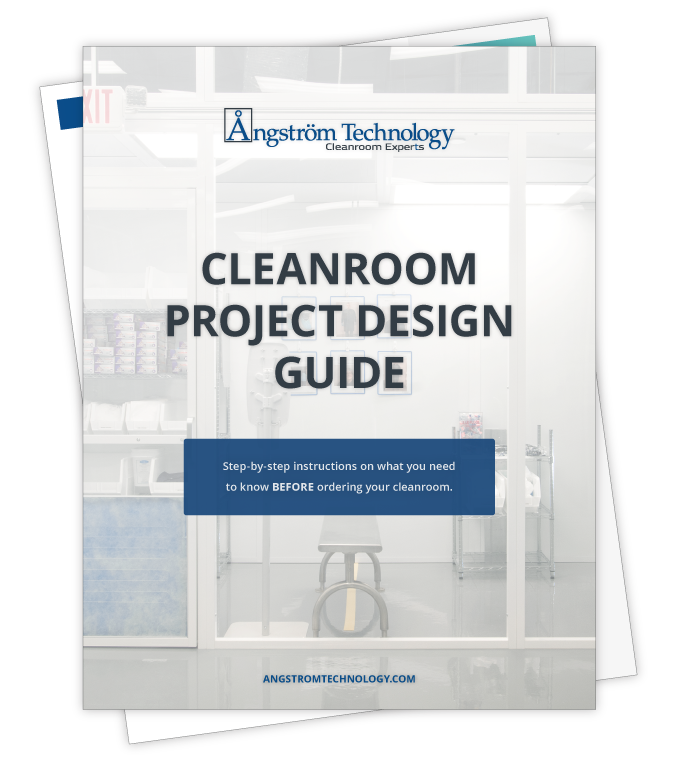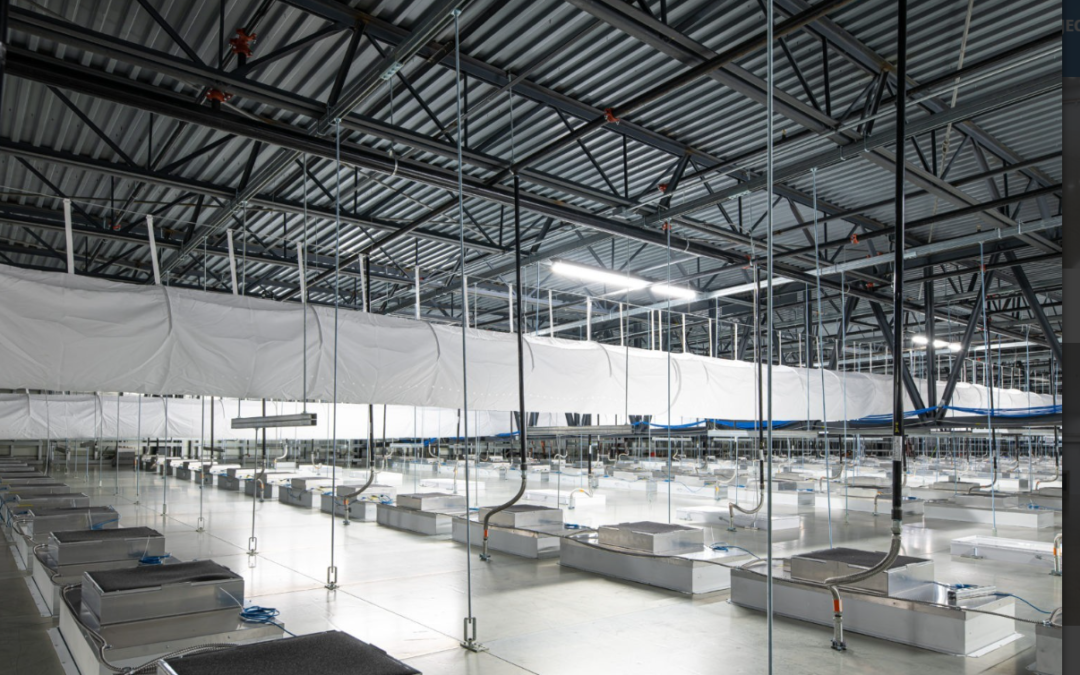If you’re considering different options for filtering and treating the air in your cleanroom, you’ve likely come across fan filter units (FFUs) and air handling units (AHUs). What’s the difference, and how can you design a cleanroom filtration system that will offer you the control you need with maximum efficiency? Let’s break down fan filter units and air handling units in more detail.
Fan Filter Units and Air Handling Units: What’s the Difference?
Both FFUs and AHUs filter and treat the air in cleanrooms and controlled environments. However, they do this differently. The most significant difference between these systems is their connection to cleanroom HVAC.
Air Handling Units
An air handling unit is synonymous with the HVAC system and acts as a centralized unit for air processing and filtration. When an air handling unit is solely responsible for delivering clean air to the cleanroom, a fan pushes treated air through a filter positioned right before the plenum and into the room.
AHUs can be simple or complex, depending on the needs of the cleanroom. Simple AHUs consist of a HEPA filter, a heating coil, a cooling coil, and a fan to push air through the unit. More complex AHUs can also contain a sound attenuator, return fan, relief air section, humidifier, intakes for outside air, and a discharge plenum.
Fan Filter Units
Fan filter units sit in the cleanroom envelope, and to reach air cleanliness standards, you can increase or decrease the quantity as needed. They are individual units that each deliver filtered air into the cleanroom. The HVAC unit still controls temperature and relative humidity, but air enters the cleanroom after terminal filtration through the separate FFUs.
Fan filter units have a more straightforward construction multiplied across the cleanroom to reach peak effectiveness. They consist of a HEPA filter, a pre-filter, and a fan to push air through the unit. The more stringent the cleanroom classification, the more fan filter units are required to reach particle count requirements. For example, while an ISO Class 8 cleanroom may only need 5-15% of ceiling coverage dedicated to FFUs, ISO Class 3 cleanrooms may require 100% ceiling coverage with these powerful filtration units.
Fan Filter Units and Air Handling Units: Pros and Cons
While one system is not inherently better than the other, fan filter units offer some advantages over an air handling unit alone.
Drawbacks of Relying on an Air Handling Unit
AHUs deliver fresh, filtered air directly into the cleanroom. Because the entire system is in-house, all filters, heating, and cooling coils are maintained in one central location. It may seem like a more straightforward construction, but using AHUs to manage the treatment and filtration of air for an entire cleanroom requires more energy and becomes more inefficient (and expensive) as your ISO class gets lower.
Disadvantages of Relying on an AHU for Filtration
- Higher Airflow Requires More Power: The entire system pushes air into the cleanroom through one or a few filtered openings. Depending on your cleanroom size and classification, a lot of air is forced through a limited space. Using an AHU to cool and filter the air in a cleanroom takes a lot of power, especially at lower ISO levels.
- Inefficient Configuration for Low ISO Cleanrooms: As the ISO class gets lower, there’s more reliance on the AHU and filter to provide clean, cool air for the room. When cleanrooms get more complex and house large or sensitive equipment that generates a lot of heat, making it challenging to manage heat and ACH with just an AHU.
- Vulnerable to Filter Loading: AHUs should run 24/7 to prevent filter loading. This is when particles settle on filter media and are forced through when the system is turned back on. Tears and filter loading can reduce filter performance and are challenging to spot and address.
Why Implement Fan Filter Units in Your Cleanroom
Many cleanrooms opt for modular construction with fan filter units installed in a grid ceiling. Especially those that must support sensitive processes at a lower ISO level. That’s not to say that an air handling system couldn’t do the job just as well. But the easy installation and maintenance of FFUs make them a more widespread, efficient, and cost-effective choice.
Advantages of Using Fan Filter Units
- Modular and Customizable: Each filter and housing is an independent system mounted in a modular ceiling grid. FFUs are entirely customizable in size, flow rate, and filter options. When designing a cleanroom filtration system with FFUs, you have more flexibility to meet your classification, project, and budget requirements.
- Thorough and Efficient Cleanroom Filtration: Fan filter units are 99.99% efficient with HEPA filters. Or 99.9995% with ULPA, making them ideal for various sensitive applications. They also produce less noise than a large AHU.
- Easy to Modify: Fan filter units are ideal for projects that need room to grow. To meet increased cleanliness requirements, you can simply add more FFUs. With AHUs, this would require a certified contractor to reconfigure the system and run extra conduit.
- Easy to Maintain: FFUs also present an advantage during maintenance. Self-contained units can be accessed and replaced as needed without having to disable the entire system.
To meet productivity demands, a reliable and easily accessible filtration system is a must. And the higher filtering power means that sensitive applications, such as those working with sensors or delicate electronics, are protected from the smallest particles with accuracy and consistency.
CLEANROOM DESIGN & BUILD PROJECTS WITH ANGSTROM TECHNOLOGY
As Angstrom Technology are cleanroom specialists. We’ve developed proven envelope solutions and reliable cleanroom HVAC designs for many applications. The Angstrom Technology group pride ourselves on our in-house expertise and capability to deliver over 100 cleanrooms annually across America, the UK, and Europe.
If you’re interested in designing a cleanroom that runs at peak efficiency to cut unnecessary costs, get in touch with the cleanroom experts at Angstrom Technology. We’re happy to help design the right airflow pattern and install the solutions that will make your cleanroom cleaner.
Get Instant Access to Our Cleanroom Design Guide
The Most Comprehensive Guide for Cleanrooms and Modular Offices



